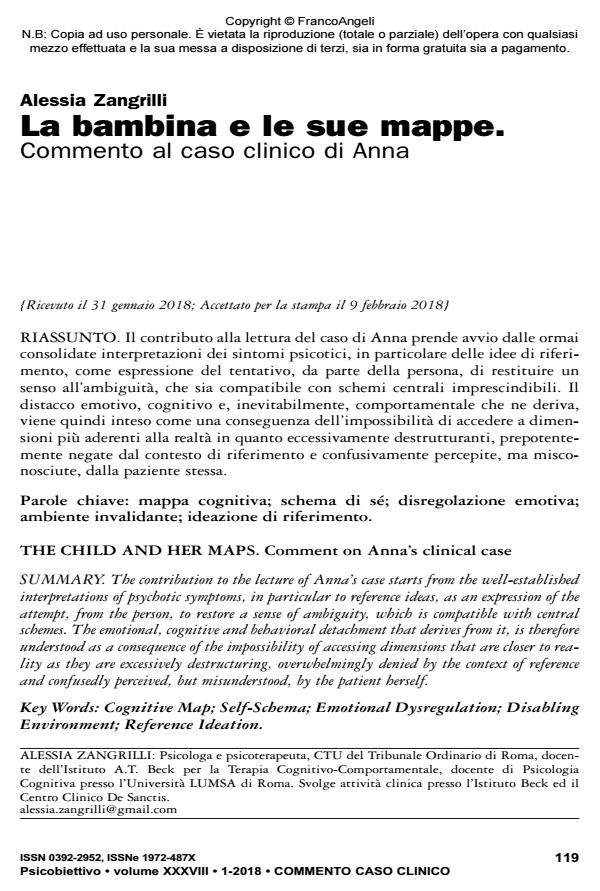La bambina e le sue mappe. Commento al caso clinico di Anna
Titolo Rivista PSICOBIETTIVO
Autori/Curatori Alessia Zangrilli
Anno di pubblicazione 2018 Fascicolo 2018/1
Lingua Italiano Numero pagine 6 P. 119-124 Dimensione file 92 KB
DOI 10.3280/PSOB2018-001008
Il DOI è il codice a barre della proprietà intellettuale: per saperne di più
clicca qui
Qui sotto puoi vedere in anteprima la prima pagina di questo articolo.
Se questo articolo ti interessa, lo puoi acquistare (e scaricare in formato pdf) seguendo le facili indicazioni per acquistare il download credit. Acquista Download Credits per scaricare questo Articolo in formato PDF

FrancoAngeli è membro della Publishers International Linking Association, Inc (PILA)associazione indipendente e non profit per facilitare (attraverso i servizi tecnologici implementati da CrossRef.org) l’accesso degli studiosi ai contenuti digitali nelle pubblicazioni professionali e scientifiche
Il contributo alla lettura del caso di Anna prende avvio dalle ormai consolidate interpretazioni dei sintomi psicotici, in particolare delle idee di riferimento, come espressione del tentativo, da parte della persona, di restituire un senso all’ambiguità, che sia compatibile con schemi centrali imprescindibili. Il distacco emotivo, cognitivo e, inevitabilmente, comportamentale che ne deriva, viene quindi inteso come una conseguenza dell’impossibilità di accedere a dimensioni più aderenti alla realtà in quanto eccessivamente destrutturanti, prepotentemente negate dal contesto di riferimento e confusivamente percepite, ma misconosciute, dalla paziente stessa.
Parole chiave:Mappa cognitiva; schema di sé; disregolazione emotiva; ambiente invalidante; ideazione di riferimento.
Alessia Zangrilli, La bambina e le sue mappe. Commento al caso clinico di Anna in "PSICOBIETTIVO" 1/2018, pp 119-124, DOI: 10.3280/PSOB2018-001008